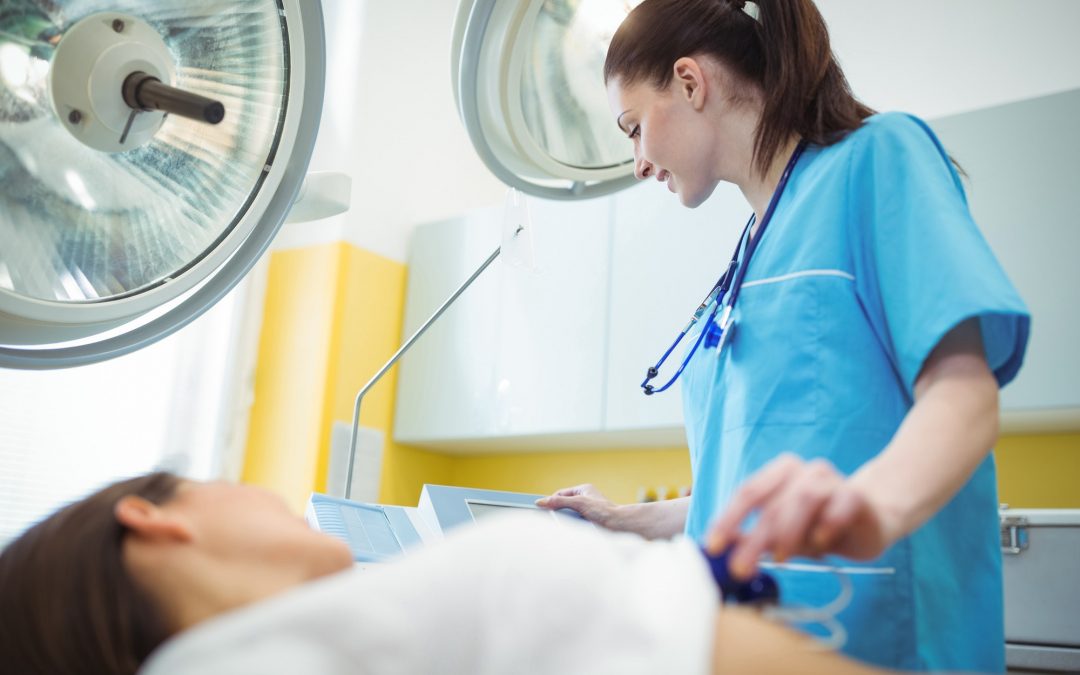Basics of ECG
Introduction

The electrocardiogram (ECG) is a representation of the electrical events of the cardiac cycle. Each event has a distinctive waveform, the study of which can lead to greater insight into a patient’s cardiac pathophysiology. It is a transthoracic (across the thorax or chest) interpretation of the electrical activity of the heart over a period of time, as detected by electrodes attached to the outer surface of the skin and recorded by a device external to the body. The recording produced by this noninvasive procedure is termed as electrocardiogram. It is a test that records the electrical activity of the heart.
It is a test that measures the electrical activity of the heart. The heart is a
muscular organ that beats in rhythm to pump the blood through the body. The signals that make the heart’s muscle fibres contract come from a node, which is the natural pacemaker of the heart. In an ECG test, the electrical impulses made while the heart is beating are recorded and usually shown on a piece of paper. This is known as an electrocardiogram, and records any problems with the heart’s rhythm, and the conduction of the heart beat through the heart which may be affected by underlying heart disease.
ECG is used to measure the rate and regularity of heartbeats, as well as the size and position of the chambers, the presence of any damage to the heart, and the effects of drugs or devices used to regulate the heart. Most ECGs are performed for diagnostic or research purposes on human hearts, but may also be performed on animals, usually for diagnosis of heart abnormalities or research.
Function
The ECG device detects and amplifies the tiny electrical changes on the skin
that are caused when the heart muscle depolarizes during each heartbeat. At rest, each heart muscle cell has a negative charge, called the membrane
potential, across its cell membrane. During each heartbeat, a healthy heart will have an orderly progression of a wave of depolarization that is triggered by the cells and spreads out through the atrium, passes through a node and then spreads all over the ventricles. This is detected as tiny rises and falls in the voltage between two electrodes placed either side of the heart which is displayed as a wavy line either on a screen or on paper. This display indicates the overall rhythm of the heart and weaknesses in different parts of the heart muscle.
Usually more than two electrodes are used, and they can be combined into a number of pairs. The output from each pair is known as a lead. Each lead looks at the heart from a different angle. Different types of ECGs can be referred to by the number of leads that are recorded, for example 3-lead, 5-lead or 12-lead ECGs. A 12-lead ECG is one in which 12 different electrical signals are recorded at approximately the same time and will often be used as a one-off recording of an ECG, printed out as a paper copy. 3- and 5-lead ECGs tend to be monitored continuously and viewed only on the screen of an appropriate monitoring device, for example during an operation being transported in an ambulance. There may or may not be any permanent record of a 3- or 5-lead ECG, depending on the equipment used.
This is the best way to measure and diagnose abnormal rhythms of the heart, particularly abnormal rhythms caused by damage to the conductive tissue that carries electrical signals, or abnormal rhythms caused by electrolyte imbalances. In a myocardial infarction (MI), the ECG can identify if the heart muscle has been damaged in specific areas, though not all areas of the heart are covered. The ECG cannot reliably measure the pumping ability of the heart, for which ultrasound-based (echocardiography) or nuclear medicine tests are used.
What types of pathology can we identify and study from ECGs?
ECG is useful in case of symptoms such as dyspnoea (difficulty in breathing), chest pain (angina), fainting, palpitations or when someone can feel that their own heart beat is abnormal. The test can show evidence of disease in the coronary arteries. An ECG can be used to assess if the patient has had a heart attack or evidence of a previous heart attack. It can be used to monitor the effect of medicines used for coronary artery disease.
It reveals rhythm problems such as the cause of a slow or fast heart beat. It
demonstrates thickening of a heart muscle (left ventricular hypertrophy), for example due to long-standing high blood pressure. It is also useful to see if there are too few minerals in the blood. Apart than above mentioned uses it can also detect arrhythmias, myocardial ischemia and infarction, pericarditis, chamber hypertrophy, electrolyte disturbances (i.e. hyperkalemia, hypokalemia), drug toxicity (i.e. digoxin and drugs which prolong the qt interval), waveforms and intervals.
Why It Is Done
An ECG is done to check the heart’s electrical activity and the cause of
unexplained chest pain, which could be caused by a heart attack, inflammation of the sac surrounding the heart or angina. It is also useful to find the cause of symptoms of heart disease, such as shortness of breath, dizziness, fainting, or rapid, irregular heartbeats (palpitations) and how well medicines are working and whether they are causing side effects that affect the heart.
It also checks how well mechanical devices that are implanted in the heart, such as pacemakers, are working to control a normal heartbeat. It checks the health of the heart when other diseases or conditions are present, such as high blood pressure, high cholesterol, cigarette smoking, diabetes, or a family history of early heart disease.
How To Prepare
Patients remove all jewelry from your neck, arms, and wrists. Men are usually bare-chested during the test. Women may often wear a bra, T-shirt, or gown. If you are wearing stockings, you should take them off. You will be given a cloth or paper covering to use during the test. The patient lies down on the bed and the nurse or ECG technician puts all leads on hands, legs and chest at appropriate places drawn in figure 1. After putting leads on patients’ body, the technician starts recording on the ECG machine. Once it is recorded, the technician takes the print on ECG paper. The paper recorded ECG is given to patient for the record.
How It Is Done
An ECG is usually done by a health professional, and the resulting ECG is
interpreted by a doctor, such as an internist, family medicine doctor,
electrophysiologist, cardiologist, anesthesiologist, or surgeon. You may receive an ECG as part of a physical examination at your health professional’s office or during a series of tests at a hospital or clinic. ECG equipment is often portable, so the test can be done almost anywhere. If you are in the hospital, your heart may be continuously monitored by an ECG system; this process is called telemetry.
During an ECG
You will lie on a bed or table. Areas on your arms, legs, and chest where small metal discs (electrodes) will be placed are cleaned and may be shaved to provide a clean, smooth surface to attach the electrode discs. A special ECG paste or small pads soaked in alcohol may be placed between the electrodes and your skin to improve conduction of the electrical impulses, but in many cases disposable electrodes are used that do not require paste or alcohol. Several electrodes are attached to the skin on each arm and leg and on your chest. These are hooked to a machine that traces your heart activity onto a paper.
If an older machine is used, the electrodes may be moved at different times during the test to measure your heart’s electrical activity from different locations on your chest. After the procedure, the electrode paste is wiped off. You will be asked to lie very still and breathe normally during the test. Sometimes you may be asked to hold your breath. You should not talk during the test.

How It Feels
The electrodes may feel cool when they are put on your chest. If you have a lot of hair on your chest, a small area may need to be shaved to put the electrodes on. When the electrodes are taken off, they may pull your skin a little.
Risks
There is no chance of problems while having an ECG. An ECG is a completely safe test. In most cases, there is no reason why you should not be able to get an ECG.
The electrodes are used to transfer an image of the electrical activity of your heart to tracing on paper. No electricity passes through your body from the machine, and there is no danger of getting an electrical shock.
Results
ECG is a test that checks for problems with the electrical activity of your heart. An ECG translates the heart’s electrical activity into line tracings on paper. The spikes and dips in the line tracings are called waves. The test usually takes 5 to 10 minutes to complete. Your doctor will look at the pattern of spikes and dips on your electrocardiogram to check the electrical activity in different parts of your heart. The spikes and dips are grouped into different sections that show how your heart is working. See a picture that explains the ECG components and intervals.

Is an ECG dangerous?
When the patient is at rest it is completely harmless. If an exercise test is
performed, the patient may get chest pains that will resolve after the exercise is stopped. This examination must be supervised by a medical doctor in addition to the ECG technicians. If necessary, the test will be discontinued at an appropriate time such as in the case of significant chest pain, changes on the ECG, a drop in blood pressure or simply when the patient achieves their target heart rate.


